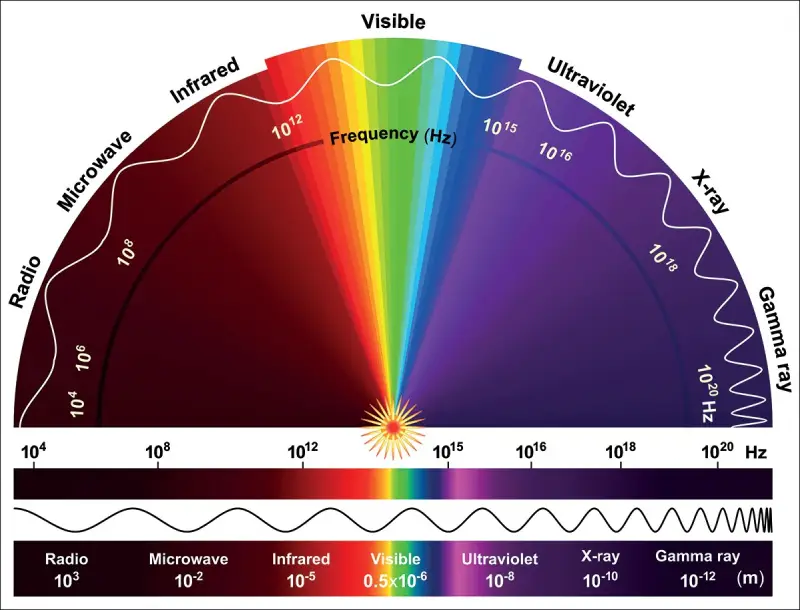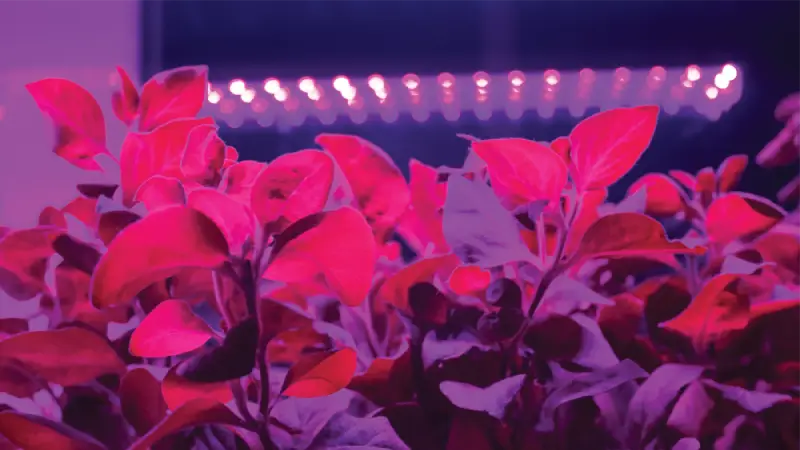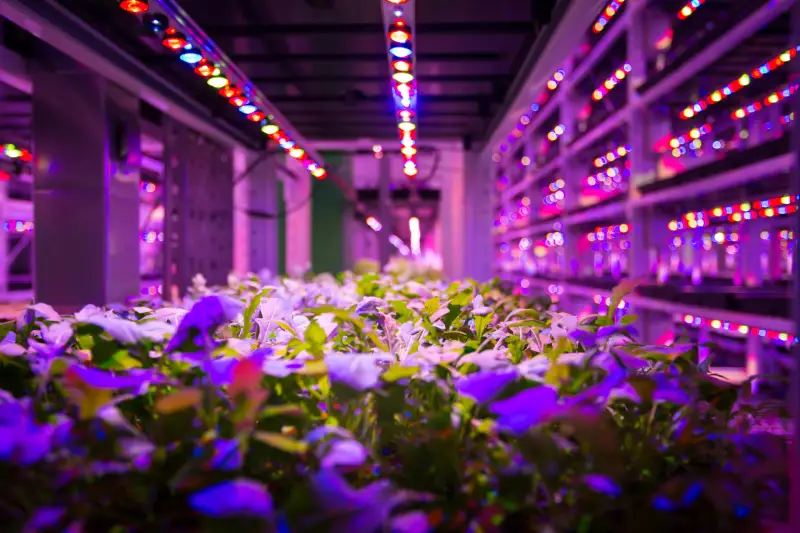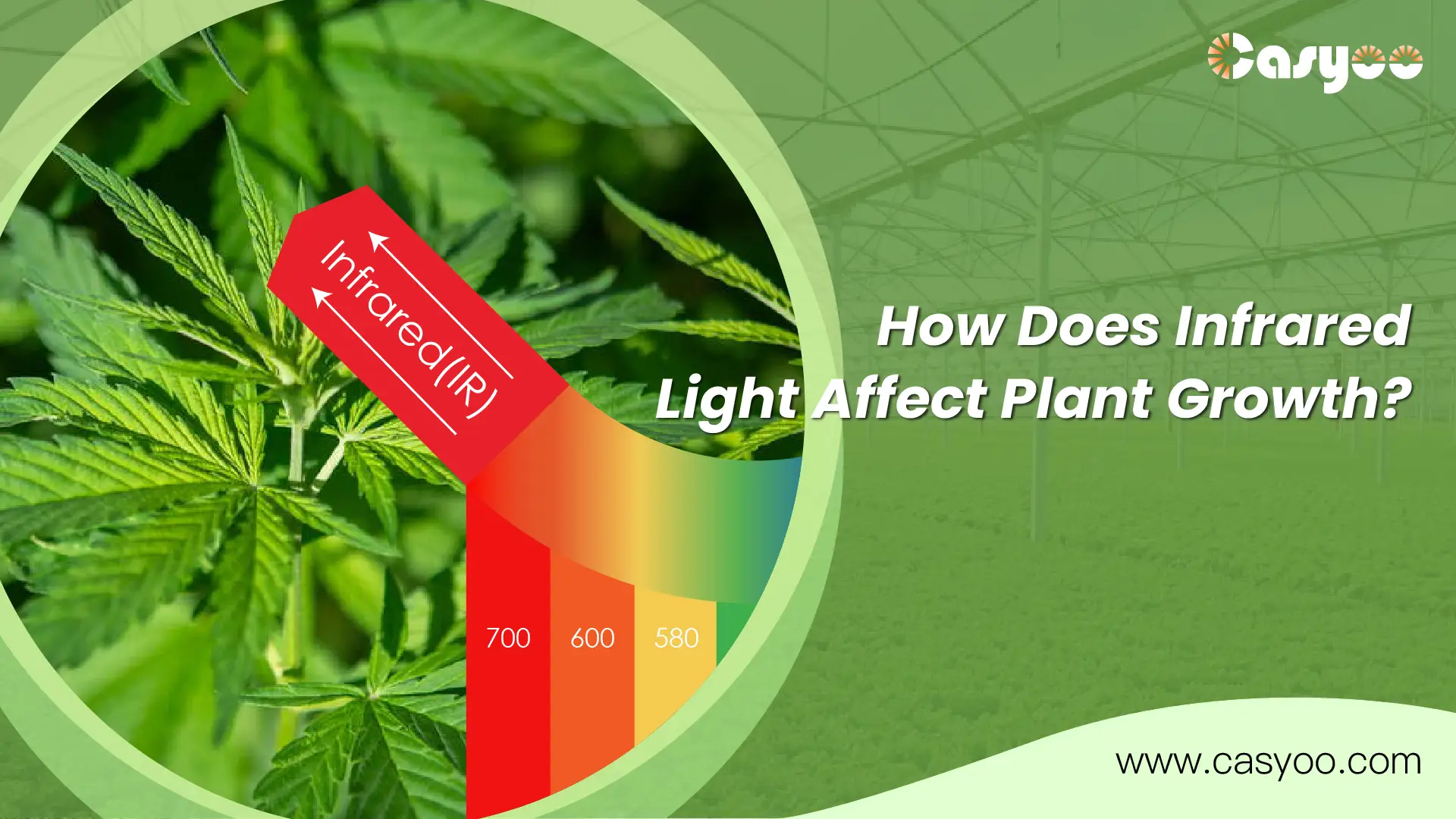Infrared light is widely discussed in plant gardening, some growers question whether it has value in gardening since we cannot see it with our naked eyes. This guide will explain what infrared light is and the effects it has on plants.
What is infrared light?

Visible light takes up less than half of the entire electromagnetic radiation spectrum. IR light is a proportion of the electromagnetic spectrum, and it has longer wavelengths than those of visible light. Typically, IR light ranges from 700 nm to 1 micron.
Infrared light consists of the following wavelengths:
- Near infrared — It is the shortest wavelength in the infrared spectrum. These are the closest wavelengths to visible light and are found in everyday items like TV remote controls. Near infrared light is not hot.
- Mid infrared — Although it is hotter than near-infrared wavelengths, it is still not regarded as a hot wavelength. Mid-infrared light helps scientists and astronomers examine and study planets and other celestial entities more effectively.
- Far Infrared – This range of wavelengths is hot. Grow lights use this wavelength to promote the growth and blooming of plants.
How do different grow lights use IR light?
There are three main types of grow lights: HID grow lights, LED grow lights, and T5 grow light fixtures. All three of these grow lights can provide IR light in their own ways.
HID Grow Lights
HIDs naturally provide a lot of IR light simply by plugging them into a power source. About 30% of the light emitted by HID lights is infrared light. Plants emit light through a chemical reaction when the arc between two electrodes interacts with the ionized gas or plasma inside the bulb. Depending on the type of gas used, you will produce white/blue light for MH and CMH lights, or orange light for HPS lights.
LED Grow Lights
LEDs are made up of multiple diodes, some of which are capable of producing infrared light. Most LEDs produce red and blue light. Therefore, manufacturers need to add infrared light emitting diodes to produce infrared light.
T5 Grow Lights
Like HIDs, T5 lights produce light through an electrical current and chemical reactions. T5 lights emit a small amount of IR light. Growers can use infrared LED grow lights in conjunction with T5 fixtures.
How does IR light affect plants?
Growers are becoming increasingly aware of IR light’s ability to affect phytochromes in plants. These photoreceptors regulate certain plant growth processes, such as stem growth and flowering.
Promotes Flowering

Researchers have discovered that IR light encourages flowering in plants because plants contain photoreceptors called phytochromes. They play a vital role in some plant growth processes, such as leaf expansion, stem growth, and flowering, and IR light stimulates the proliferation of these cells.
Growers can use IR light to “manipulate” a plant’s senses, thereby altering the plant’s growth process. Exposure to IR light deceives a plant into believing it is receiving the same amount of light as it would if it were growing outdoors during any particular season because phytochromes react significantly to this type of light.
Encourages Plant Growth
When a plant is shielded by the canopy of other crops, an automatic defense system is triggered. Shorter plants will often catch light between the leaves of taller plants, which means they are more likely to absorb higher levels of infrared light. This will trigger the plant’s survival mechanism, plants will stretch upward or outward to try to get more light. When used in conjunction with red and blue light, infrared lighting can promote rapid plant growth and help with branching.
Do your plants need infrared light?

If you want to use infrared light in your grow space, there are a few things you need to consider:
Types of Plants You’re Growing
The first thing to consider is the crop type you are planting. Infrared light interacts with the photosensitive pigments in different crops in different ways. You don’t want to provide your crops with more light than they can withstand.
How You Want to Manipulate Your Crops
The second thing to consider is how you want to manipulate your crops. Do you want your plants to grow compact (if you have a small space), or do you want them to grow tall and stretched out? As I said before, plants will stretch out under infrared light, and you need to consider this before introducing infrared light into your grow room.
Increased costs
Infrared light is not essential for plant growth, and it will generate a lot of extra heat within your growing space. This means you’ll need additional ventilation systems to regulate the temperature. All of this means more electricity bills and more initial costs. Of course, if you are in winter or a colder climate, infrared light can heat the surface of the leaves and help increase leaf temperature, which can accelerate plant growth.
Safety Aspects
Infrared light can cause damage to your skin. When using infrared light, it is best to wear protective gear to prevent burns.
Things to note when using infrared light
The growth room should maintain a suitable temperature while balancing various heat and light sources. So growers must strategically place their crops to ensure that they can get the ideal light intensity without burning them. Too much light and infrared radiation can lead to heat stress in plants. Heat stress causes leaves to curl down to retain water, turn brown, and dry out. The stomata on the leaves are closed to retain water, and the photosynthesis rate decreases, which affects the growth and development of the plant.
Final Thoughts
Infrared light can be used in combination with red and blue light to grow tall crops that stretch toward the sun. Whether or not to choose to use infrared light depends entirely on your growing conditions. Our LED grow lights have the most ideal full spectrum, with 770nm infrared diodes added. If you are planning to grow a certain plant, you can always contact us and we will do our best to give you advice!




